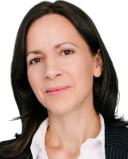Dreaming
Is Your World Collapsing? Practice Radical Hope
In order to cultivate radical hope, we must open up our imaginative capacities.
Posted May 22, 2023 Reviewed by Devon Frye
Many healthcare professionals harbor a sense that medicine has lost its way, that it’s no longer the vibrant practice it once was. Rather than tending to the sick and vulnerable, we find ourselves ever more beholden to productivity metrics, electronic medical records, and patient-consumer demands—while the suffering sick fade into the background. What hope is there for those of us in the health professions?
In his book Radical Hope, the philosopher Jonathan Lear tells the story of the people of the Crow Nation—a Native American tribe forced onto a reservation in Montana and Wyoming in 1851, a people who courageously faced the possibility of the demise of their traditional way of life and found a new way to live. As a physician, I read Radical Hope looking for clues on how to make sense of the decline of health care. But the book offers insight to anyone whose world has been turned upside down.
Navigating Cultural Collapse
Well before the Crow found themselves on the brink of cultural collapse, they had cultivated a practice of discernment—what Lear calls a “practice for pushing at the limits of their understanding.” They encouraged tribal members to go off into the wilderness and dream. They believed that dreams and visions could provide access to other-worldly wisdom and guidance.
One young Crow, a future chief named Plenty Coups, had an extraordinarily vivid dream in which spiritual beings foretold the end of the buffalo and traditional Crow life. The tribal elders together interpreted Plenty Coups’ dream and charted a new course for advancing through the challenges they realized their people would face. Dreaming provided the Crow the psychological flexibility for flourishing in the face of uncertainty, and holding out for the future good suggested by the dream was an act of radical hope.
Not everyone accepts the Crow theory of dreams, however, and Lear acknowledges this. Some people believe the Crow dreams truly are religious. Others think they derive from a distorted spiritual origin. Still others believe the dreams are psychological—tied to anxieties and desires.
Regardless, the critical question for those of us who stand at the brink of unprecedented change and challenge, then, is how do we cultivate the imaginative capacities that push at the limits of our understanding until the path lies plainly before us? What other sorts of practices do we cultivate and what might radical hope look like for us?
Learning from the Crow
In reflecting on the Crow dream-life, several observations appear relevant to the health professions.
First, the tribe sent its members into the wilderness to dream—and some were quite young. Lear tells us Plenty Coups was nine years old when he had his two significant dreams that guided the future of the Crow people. Those who reimagine health care need not be children, but they must have imaginative capacity. They must be schooled again in their traditions but allow for a kind of discernment—a creative responsiveness to new constraints.
Second, Crow elders gave audience to the dreamers—that is, the visions were interpreted in the context of community. Were the healing professions to invite input from what Lear calls “new Crow poets” or “creative makers of meaningful space,” hospitals should give thoughtful and deliberate consideration to their ideas and novel approaches and not dismiss them for their radicality.
Third, the Crow were willing to reimagine traditional conceptions of excellence (such as stealing horses or fighting enemy tribes) in anticipation of the collapse of traditional cultural life. (Stealing horses isn’t valorous when it becomes illegal.) What this means for medicine is that if clinicians desire not merely to survive but to flourish in the face of radical change, they must be prepared for their own hospitals or health systems to break with the past, even if others won’t.
Fourth, the Crow both cultivated a new standard of excellence (namely, courage) and learned to embody it, and they crafted policies that reflected this internalized courage. Calls for change in medicine have too often focused on the need for personal resilience or on systems change, without recognizing that navigating uncharted waters requires both personal and systems change.
Fifth, borrowing from Aristotle, cultivating courage requires an ongoing commitment not to mere optimism, but to internalizing a habit of excellence that faces up to reality, identifies and mitigates factors that threaten courageous action, and is motivated toward good. This is not simply mindfulness but the life task of forming oneself into clinicians habituated to courage.
The medical profession has much to learn from the people of the Crow. As Plenty Coups did for Crow warriors years ago, so must physicians do for themselves—reimagine the cultivation of the virtues of the ancient healer in modern, efficient hospitals driven by the bottom line—a tall task for which new poets are required.




